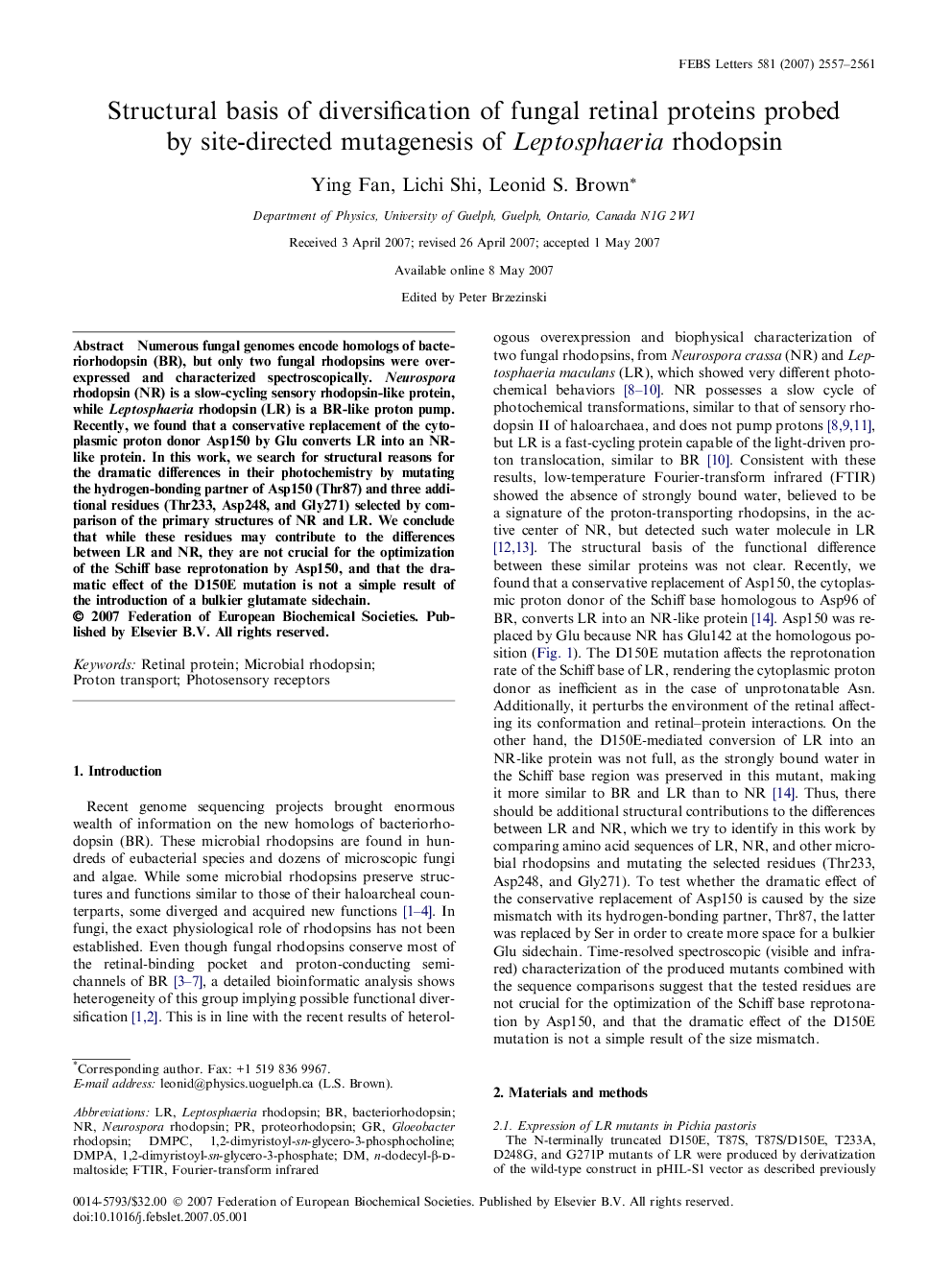| Article ID | Journal | Published Year | Pages | File Type |
|---|---|---|---|---|
| 2049947 | FEBS Letters | 2007 | 5 Pages |
Numerous fungal genomes encode homologs of bacteriorhodopsin (BR), but only two fungal rhodopsins were overexpressed and characterized spectroscopically. Neurospora rhodopsin (NR) is a slow-cycling sensory rhodopsin-like protein, while Leptosphaeria rhodopsin (LR) is a BR-like proton pump. Recently, we found that a conservative replacement of the cytoplasmic proton donor Asp150 by Glu converts LR into an NR-like protein. In this work, we search for structural reasons for the dramatic differences in their photochemistry by mutating the hydrogen-bonding partner of Asp150 (Thr87) and three additional residues (Thr233, Asp248, and Gly271) selected by comparison of the primary structures of NR and LR. We conclude that while these residues may contribute to the differences between LR and NR, they are not crucial for the optimization of the Schiff base reprotonation by Asp150, and that the dramatic effect of the D150E mutation is not a simple result of the introduction of a bulkier glutamate sidechain.
